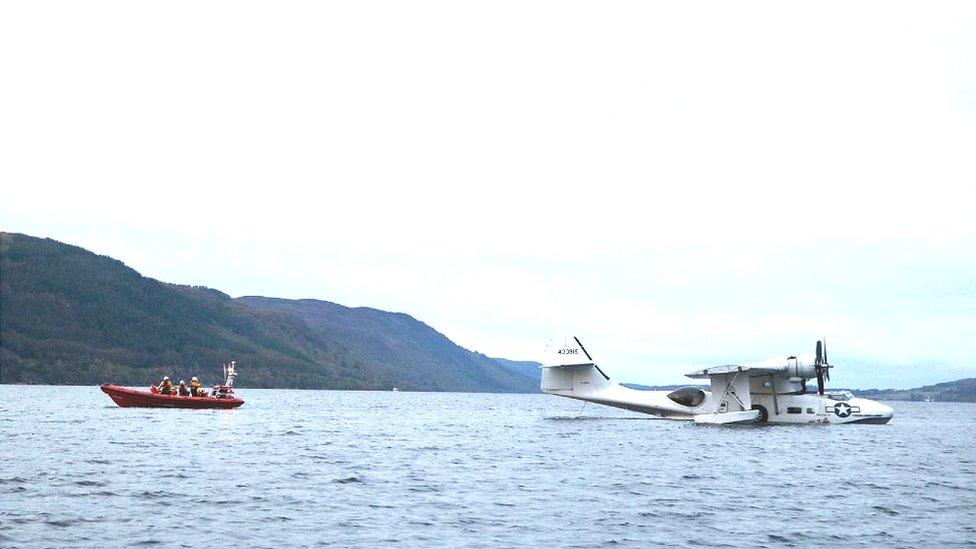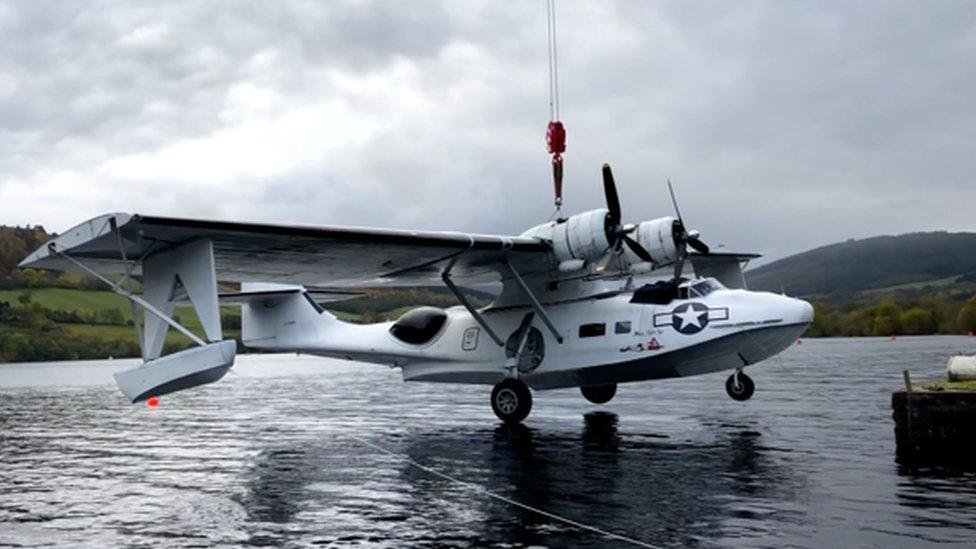Fears 'monster' Loch Ness waves would sink WW2 seaplane
- Published
The Catalina flying boat had been attempting to take off when it developed engine problems.
The crew of a World War Two flying boat feared the aircraft would be wrecked on Loch Ness after it suffered engine failure.
The rescue effort last year has been told in a new BBC Alba documentary, Escape from Loch Ness.
The Cambridgeshire-based Catalina had been flown to the Highlands for filming and had landed on the loch.
After the right engine failed to start for take off, the crew needed help from the RNLI to get the aircraft to safety.
There were concerns bad weather and waves of up 3.5m (11ft) high could damage the plane.
The Catalina - called Miss Pick Up - is operated by Plane Sailing in Duxford. It is one of only 15 airworthy Catalinas in the world, and the only one in the UK.
Built in the 1930s, the aircraft were used in anti-submarine warfare and for maritime rescues by Allied forces during World War Two.
Miss Pick Up was flown to Loch Ness on 17 October, and after landing on the loch to drop off a cameraman the right engine failed to start.

The Catalina was towed to the safety of a bay by RNLI Loch Ness

A crane was used to lift the plane from the loch
Conditions were calm at the time, but there were concerns they could quickly worsen and damage or even sink the aircraft.
RNLI Loch Ness' lifeboat was launched and the flying boat was towed to a sheltered location in Urquhart Bay until a large crane arrived and lifted the plane on to land.
A six-week "battle" then began to raise enough funds to repair the engine, complete the repairs and fly the aircraft back to Duxford.
An appeal raised more than £30,000 and Miss Pick Up was flown home in early December, just days before three weeks of forecast bad weather arrived in the Highlands.

It was six weeks before the aircraft could be flown back to England
Former RAF Harrier jump jet pilot Paul Warren Wilson, one of the Catalina's pilots who led the rescue operation, said: "One of the worst things that can happen to us is being unable to start an engine on the water. It's pretty unusual for us, especially if we've just been running and just landed.
"We were in the middle of the loch with the problem of drifting backwards and sooner or later you're going to hit something.
"It was calm when we landed but in the longer term we needed shelter and to protect the plane because she's not indestructible."
Escape from Loch Ness will be shown on Monday at 21:00 and will be available on the BBC iPlayer.